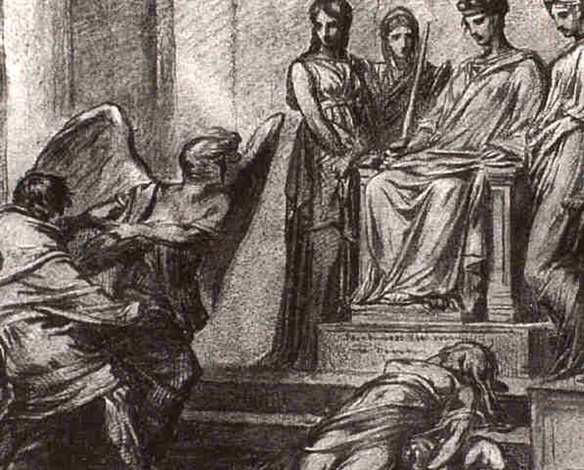Labor Legislation
by
Charles Lamson
Since 1930, the federal government has enacted more laws dealing with industrial relations than had been enacted during the prior history of the republic. Although the scope of this analysis does not include all of these laws together with court interpretations, some basic knowledge of them is valuable. This post covers the Fair Labor Standards Act, the Labor Management Relations Act, and the Labor Management Reporting and Disclosure Act.
 |
The Fair Labor Standards Act
The federal Fair Labor Standards Act (FLSA) had two major objectives. The first objective placed a floor, regardless of economic conditions, under wages of employees engaged in interstate commerce trade among or between states. The second objective discouraged a long work week and thus spread employment. Setting a minimum-wage accomplished the first objective. By successive amendments, this wage increased to a rate of $5.15 per hour. Employers are allowed to pay a lower hourly wage to disabled workers, full-time students, and new employees under age 23 in the first 90 days of employment. Requiring employers to maintain adequate records and pay time and a half for all hours worked over 40 achieved the second objective. An employer may work employees, other than children, any number of hours a week if the employer pays the overtime wage.
Exclusions from the Act
The FLSA does not cover the following:
Child Labor Provisions
The FLSA forbids oppressive child labor. It prohibits or severely limits the employment of children less than 16 years of age. This rule does not apply to certain agricultural employment, to parents or guardians employing their children or ards, to children employed as actors, or to certain types of employment specified by the Secretary of Labor as being exempted by the regulations. Youth between the ages of 16 and 18 are not permitted to work in Industries declared by the Secretary of Labor to be particularly hazardous to health.

Contingent Wages
Many types of employment call for the payment of wages on a commission basis or on a piece-rate basis. Many sales people receive a commission on their sales rather than a salary. For employers covered by the act, if commissions earned in any one week are less than the minimum wages for the hours worked, the employer must add to the commission enough to bring the total earnings to the minimum wage. The same applies to employees being paid on a piece-rate basis. The act allows these types of incentive wages, but they cannot be used to evade the minimum wage provisions of the act.
The National Labor Relations Act and the Labor Management Relations Act
The National Labor Relations Act of 1935 (NLRA, known as the Wagner Act), expanded by the federal Labor Management Relations Act of 1947 (LMRA), also known as the Taft-Hartley Act, sought to create bargaining equality between employers and employees by permitting union activity. Specifically, it did this by attacking the denial of some employers of the right of employees to organize and the refusal to accept collective bargaining. Collective bargaining is the process by which employers and unions negotiate and agree on the terms of employment for the employee. These terms are then spelled out in a written contract. Collective bargaining requires that the employer recognize and bargain with the representative the employees select. The employees representative is typically a union. The act also sought to eliminate certain forms of conduct from the scene of labor negotiations and employment by condemning them as unfair practices.
The NLRA excludes agricultural laborers and domestic servants, individuals employed by a parent or spouse, and independent contractors from its definition of employees. Thus they are not covered by the act. Included are all employers engaged in interstate commerce except:

The Labor Management Relations Act has the following five major provisions:
The National Labor Relations Board
The Labor Management Relations Act provides a continuation of the NLRB of five members appointed by the president and confirmed by the Senate. This board hears and conducts investigations of complaints of employer and union unfair labor practices. If the board finds that an unfair practice exists, it has the power to seek an injunction to stop the practice. When a strike threatens national health or safety, the president may appoint a five-person board of inquiry and upon the basis of their findings may apply to the federal court for an injunction that will postpone the strike for 80 days. The NLRB supervises elections to determine the bargaining representative for the employees within each bargaining unit. In case of dispute, the NLRB determines the size and nature of the bargaining unit.
In addition to appointing the NLRB, the president appoints and the Senate confirms a general counsel. This general counsel has complete independence from the board in prosecuting complaint cases but in most other matters acts as the chief legal advisor to the board.
Declaration as to the Rights of Employees
The Labor Management Relations Act sets forth the following rights of employees:

Declaration as to the Rights of Employers
The Labor Management Relations Act gives the employer many important rights:
Prohibition of Employers' Unfair Labor Practices
The chief act prohibited as unfair practices by employers comprise:
When the NLRB finds the employer guilty of any of these acts, it usually issues a cease-and-desist order. If the cease-and-desist order does not prove effective, an injunction may be obtained.
Prohibition of Unfair Union Practices
The Labor Management Relations Act lists seven specific acts that unions and their leaders may not engage in:

The Labor-Management Reporting and Disclosure Act
In 1959, Congress passed the Labor-Management Reporting and Disclosure Act (LMRDA), also called the Landrum-Griffin Act. The purpose of this act was to protect union members from improper conduct by union officials. The act contains a Bill of Rights for union members, it classifies additional actions as unfair labor practices, and it requires unions operating in interstate commerce and their officers and employers to file detailed public reports.
Bill of Rights
The Bill of Rights provision of the LMRDA guaranteed union members the right to meet with other union members, to express any views or opinions at the union meetings, and to express views on candidates for union office or business before the meeting.
Additional Unfair Labor Practices
In addition to the unfair labor practices outlawed by the Labor Management Relations Act, the Labor-Management Reporting and Disclosure Act declares the following acts unfair labor practices:
Reporting Requirements
The very detailed reporting requirements of the LMRDA require unions to file copies of their bylaws and Constitution in addition to reports listing the name end title of each officer; the fees and dues required of members; and the membership qualifications, restrictions, benefits, and the like. A complete listing of assets and liabilities, receipts, and disbursements must be reported. Officials of the union must sign the union reports and the information contained in them must be made available to the union members.

The officials of the union must each file a report indicating any financial interest in or benefit they have received from any employer whose employees the union represents. They must also report whether they have received any object of value from an employer.
In addition to the requirement of annual reports by the union and its officials, employers must file annual reports listing any expenditures made to influence anyone regarding union organizational or bargaining activities. Everyone involved in labor-persuader activities must disclose certain information. As public information, these reports must be available to anyone who requests them.
The act also contains a number of additional provisions aimed at making unions more democratic and at protecting union funds from embezzlement and misappropriation.
INTERNET RESOURCES FOR BUSINESS LAW :max_bytes(150000):strip_icc()/RaphaelJustitia-56aaa9775f9b58b7d008d40c.jpg) *SOURCE: LAW FOR BUSINESS, 15TH ED., 2005, JANET E. ASHCROFT, J.D., PGS. 359-366, 368*
end
|

No comments:
Post a Comment